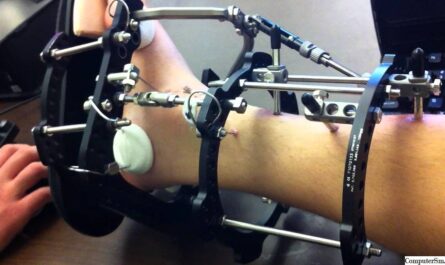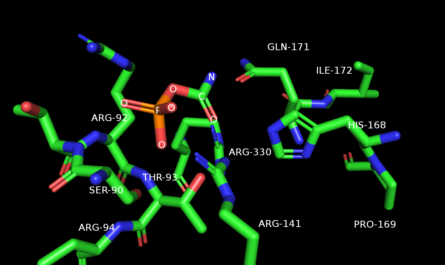These materials interact with biological systems to treat, augment, or replace tissues, organs or functions of the body. Some of the main types of polymers used in biomaterials include collagen, Dacron, polyethylene, polyvinyl chloride (PVC), polyglycolic acid (PGA), silicone polymers, polylactic acid (PLA), polytetrafluoroethylene (PTFE), and polyurethane.
Applications
Biopolymeric materials have found a variety of applications in the healthcare industry due to their biocompatibility and mechanical properties similar to natural tissues. Some major applications of Polymeric Biomaterials include
Tissue Engineering Scaffolds: Naturally derived or synthetic polymer scaffolds are used as frameworks to allow cells to grow and form new tissues. Scaffolds made of collagen, PLA, PGA are used for growing tissues like skin, cartilage and bone.
Drug Delivery Systems: Biodegradable polymers like PLA and PGA are used to create implants, micro/nanoparticles, and hydrogels for controlled release of drugs, proteins, and genes inside the body over long periods of time. This helps reduce number of doses.
Sutures and Staples: Sutures made from PGA and PLA are bioabsorbable and do not require removal after wound healing. These replace conventional sutures made from silk or stainless steel.
Contact Lenses: Soft contact lenses are made from hydrogel polymers like poly-HEMA and silicone hydrogels that are permeable to oxygen and comfortable to wear for long periods.
Artificial Heart Valves: Polyurethane and Dacron polymer valves are commonly used as replacement heart valves to restore function in patients with defective native valves.
Artificial Joint Replacements: UHMWPE, polyethylene, and silicone are widely employed in artificial hip, knee and shoulder implants to replace damaged joints and restore mobility.
Global Market Growth Drivers
The global polymeric biomaterials industry has been witnessing steady growth over the past few decades and is expected to reach a value of over $30 billion by the end of this decade according to market analysts and researchers. Some of the major drivers fueling this growth include:
Growing Geriatric Population: With increased human lifespan across the globe, the percentage of elderly population over 65 years of age is rising rapidly. This age group has a higher risk for chronic diseases and joint/tissue replacement surgeries thus propelling demand.
Increasing Healthcare Spending: As incomes rise in developing regions like Asia-Pacific and Americas, governments as well as individuals are spending more on healthcare technologies like artificial organs, implants, tissue-engineered prosthetics driving market expansion.
Advancements in Materials Science: Continuous R&D efforts to develop stronger, more biocompatible synthetic polymers as well as naturally derived biomaterials for new medical applications are supporting market rise.
Biomaterials Regulations
Polymeric biomaterials must undergo rigorous testing and obtain regulatory clearances before commercialization given that they are directly used inside the body. Some key agencies that regulate polymeric medical materials globally include:
United States Food and Drug Administration (FDA, USA): The FDA has stringent premarket approval procedures for new biomaterials before they can be marketed in the US through clinical trials.
International Organization for Standardization (ISO, Geneva): ISO technical committees develop voluntary international standards on biomaterial sterilization, cytotoxicity testing and biocompatibility evaluation methods that are adopted worldwide.
European Medicines Agency (EMA, EU): Similar to FDA, the EMA regulates the quality, safety and efficacy of all medical devices including biomaterials marketed in the European Union.
Challenges and Future Outlook
Despite the tremendous innovation and growth, polymeric biomaterials face certain limitations and challenges that are driving further advances:
Long Term Performance: Ensuring materials retain mechanical integrity and do not elicit adverse tissue reactions after many years inside the body remains a challenge limiting their lifespan.
Infection Risk: Implants can become sites of bacterial adhesion and biofilm formation leading to device-centered infections requiring removal. Antimicrobial strategies seek to reduce this risk.
Individual Variations: No single material is suited for all patients due to differences in biochemistry, immune response and healing abilities necessitating customized solutions.
Affordability: While biomaterial-enabled prosthetics have improved quality of life, high costs may limit access in developing nations driving the need for lower-cost alternatives.
Going forward, the field of polymeric biomaterials is expected to witness groundbreaking developments across multiple fronts including stem cell interactions, 3D bioprinting, intelligent responsive materials, and multi-functional biocomposites aiming to restore native tissue properties and functions. Combined with technological and scientific progress, biomaterials have the potential to revolutionize treatment modalities and help millions globally combat diseases.
*Note:
1.Source: Coherent Market Insights, Public sources, Desk research
2.We have leveraged AI tools to mine information and compile it




